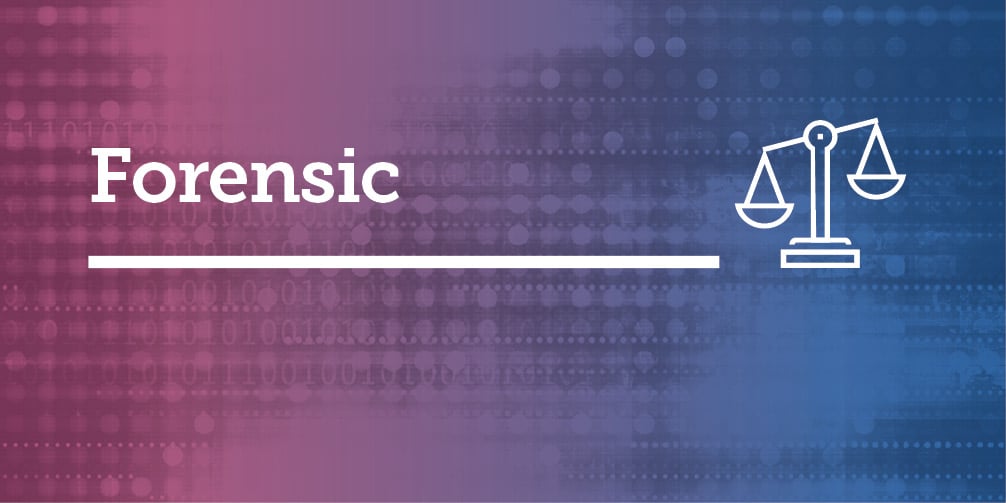Featured Article
Article Title
Addressing Systemic Bias in Violence Risk Assessment
Authors
Shoba Sreenivasan - Forensic Services Division-SVP Evaluator, California Department of State Hospitals, Sacramento, California, and Adjunct Clinical Professor at Keck USC School of Medicine, Los Angeles, California
Melinda DiCiro - Forensic Services Division Chief (Acting) at California Department of State Hospitals, Sacramento, California
James Rokop - Forensic Services Division-Chief Psychologist, SVP at California Department of State Hospitals, Sacramento, California
Linda E. Weinberger - Chief Psychologist, USC Institute of Psychiatry, Law, & Behavioral Sciences and Professor Emerita, Keck USC School of Medicine, Los Angeles, California
Abstract
Criminal history plays a prominent role in violence risk assessments. For people in non-dominant groups, disproportionate criminal justice involvement may unfairly and inaccurately elevate violence risk in evaluations. Criminal justice reports continue to document higher rates of arrest and convictions for those in minoritized racial groups. Bureau of Justice surveys have found that ethnic minorities are more likely to serve time when crime is violent than Whites. Black males ages 18 and 19 were 12.7 times more likely to be imprisoned than White males of the same age. In fact, across all age bands, from 18 to 65 and older, Blacks had higher rates of imprisonment than Whites. Racial inequities in incarceration rates can translate into a Black offender receiving higher risk scores on actuarial instruments than a White offender and thus a biased misclassification as high risk. Awareness of the impact of structural biases that may be embedded in violence risk assessments is critical to fair assessments. We highlight sources of potential systemic racial bias embedded within existing violence risk assessment methods and conclude with potential methods to enhance structural competency and reduce the risk of biased assessments.
Keywords
Bias, Criminal behavior, Criminal justice, Racial disparity, Risk assessment, Structural competence
Summary of Research
"An individual's history of criminal justice involvement plays a prominent role as a risk factor for recidivism in violence risk assessment. There is growing concern, however, regarding systemic bias in the criminal justice system against minoritized groups for whom there are disproportionately higher rates of arrest and conviction than for those in the dominant group. These concerns are relevant to forensic evaluators and decision-makers, particularly if the methodology employed is biased against and inflates violence risk for minoritized groups" (p. 626).
"Structured professional judgments (SPJ) consist of empirically identified risk factors for clinical decision-making about level of risk, but without the use of numeric values or calculations. Actuarial risk assessment tools assign a numeric value to risk factors and provide probabilistic estimates of risk level using statistical algorithms to provide estimates of future criminal recidivism. Some argue actuarial methods reduce the risk of evaluator bias, as they are grounded in statistical science and leave little room for clinical judgment, thus gaining prominence as a preferred method of violence and sexual violence risk assessment… Countering the argument that criminal history is a scientifically supported risk factor that should not be overridden is whether there are race inequities in who is arrested and prosecuted. If such inequities exist, then prior criminal history can result in inaccurate risk assessments….In any violence risk scheme, therefore, the more criminal history is weighted, the more likely that a minoritized person will have a high score and be deemed a high risk" (p. 627).
"Some argue that criminal history functions as a proxy for race and social disadvantage… Other commonly identified risk factors, such as substance use, antisocial associates, noncompliance with treatment or parole/probation supervision, and mental illness diagnosis, may elevate risk in minoritized groups. Substance use is more likely to be detected and formally documented in minoritized groups, who are more subject to suspicion, search, arrest, monitoring, and incarceration… The repercussions of overdiagnosis of serious mental illness in minoritized groups may have compounding effects and increase the perceived dangerousness of people in marginalized groups" (p. 628- 629).
"The U.S. juvenile justice system has a history of detaining minoritized youth at rates much higher than White youths. The 'school-to-prison pipeline' describes the disproportionate application of juvenile justice controls to minoritized youth when compared with White youth, even when poverty and urban environments are controlled…racial inequities are evident in school disciplinary practices and juvenile justice placement, serving as a caution against the over-reliance of such factors as markers of antisociality in violence risk assessment" (p. 629- 630).
"Structured professional judgment (SPJ) is an alternative approach to actuarial assessment, although not a panacea for managing bias….SPJs can reduce overemphasis on criminal histories that inflate actuarial risk scores. Forensic evaluators should also address whether the instrument allows for the integration of culturally contextualized individual assessments" (p. 630 - 631).
"The DSM 569 Cultural Formulation Interview (CFI) is a method that can enhance a person-centered assessment. Another avenue is to consider violence risk factors through the lens of a cultural contextual appraisal of items contained in the instrument that is employed… Dominant-culture driven tools may also diminish or devalue the cultural experience and values of a minoritized individual" (p. 632).
"Poverty may result in lack of consistent access to reliable transportation, thus resulting in failures to report to supervision or mandated treatment sessions. Unstable living situations in urban areas with high levels of criminality may reinforce aggression as a survival mechanism. These items, when interpreted within the specific context of the individual, may suggest the impact of race and poverty, rather than disregard for authority or antisocial attitudes, as driving the behavior… Considering such elements can enhance an individualized analysis of predisposing, precipitating, and perpetuating factors for violence in at-risk youths. They are also relevant to recognizing an adult offender's path to criminal behavior. Such a method may be more meaningful for an understanding of what contributes to risk and what factors can be targeted to facilitate community reintegration" (p. 632).
"Although some researchers underscore the value of standardized risk methods to reduce biases created by race, these methods may still be unfair to those with histories of marginalization due to race and economic disadvantage. Whether constructed to address bias or not, risk assessment instruments alone cannot overcome the racial and ethnic disparities in the criminal justice system" (p. 633).
Translating Research into Practice
Recognize Upstream Systemic Inequities:
"Forensic evaluators should develop structural competency in recognizing upstream policy determinants, such as biases in criminal justice practices, that create downstream racial inequities, such as the disproportionate arrest and incarceration of minoritized groups" (p. 630).
Awareness of Inequities in Juvenile Sanctions:
"We suggest that forensic evaluators consider in their evaluations how the school-to-prison pipeline biases may inflate risk for minoritized groups. Forensic evaluators should explicitly address, both in their reports and in their testimony, how risk factors such as juvenile justice history, age at first arrest, prior incarceration, and whether the justice system’s response to the individual’s offense behavior may be sources of bias" (p. 631).
Develop Awareness of Bias Blind Spots:
"Forensic evaluators, like all other people, are prone to and may not recognize their own bias, a phenomenon known as the ‘bias blind spot,’ and may attribute bias to others, though not themselves. In addition, they may unconsciously perceive outsiders as dangerous and underestimate the risk of danger for people in their own group. Indeed, this is why introspection alone is an ineffective strategy to mitigate bias…Recognition of biases may be fostered by strategies such as periodic case discussions with other professionals, enhancing cultural competence and awareness through education and training, and review of the evaluator’s database of their own evaluations for patterns of potential bias" (p. 633).
"Ultimately, forensic psychiatrists and psychologists must understand and account for structural and other systematic biases that affect violence risk factors; recognize and correctly manage the strengths and limitations of risk assessment methods; adhere to their ethics obligations to conduct fair, culturally sensitive assessments; and be aware of and effectively mitigate their own vulnerability to implicit biases. These efforts and transparency not only project objectivity, but also support ethical behavior. To do less is a failure to uphold our personal integrity and that of our profession. This professional obligation, moreover, is crucial when the concerns at hand carry significant consequences for both the examinee and the public" (p. 633).
Other Interesting Tidbits for Researchers and Clinicians
Mitigating Racial and Cultural Biases
"Addressing racial and cultural bias in risk assessment is consistent with the forensic psychiatry and psychology ethics guidelines’ admonition for professionals to be cognizant of the potential for and sources of biases and aspire to mitigate them. Implicit biases (largely unconscious attitudes) or explicit biases (conscious attitudes) influence negative perceptions of others outside one’s own group. Both forms of biases have the potential to elevate risk for minoritized groups" (p. 630).
Consider Applicability of Risk Factors:
"Although SPJs can individualize assessment, biases may still exist, including those related to the inclusion of historical risk factors derived largely from the majority culture or the exclusion of culturally relevant protective factors (e.g., having elder mentors and cultural support as found in AI/AN groups)" (p. 631).
Environmental Factors
"To minimize the impact of inflating risk contributed by systemic criminal justice disparities, the forensic evaluator should consider if and how social marginalization led to a history of arrests and incarceration. Careful consideration may lead to a reduction of both systemic bias (related to overreliance on mere quantitative assessments based on a tally of arrests and incarcerations) and to the resulting character attributions (e.g., that the individual is criminogenically inclined, psychopathic, or severely antisocial)" (p. 633).





























